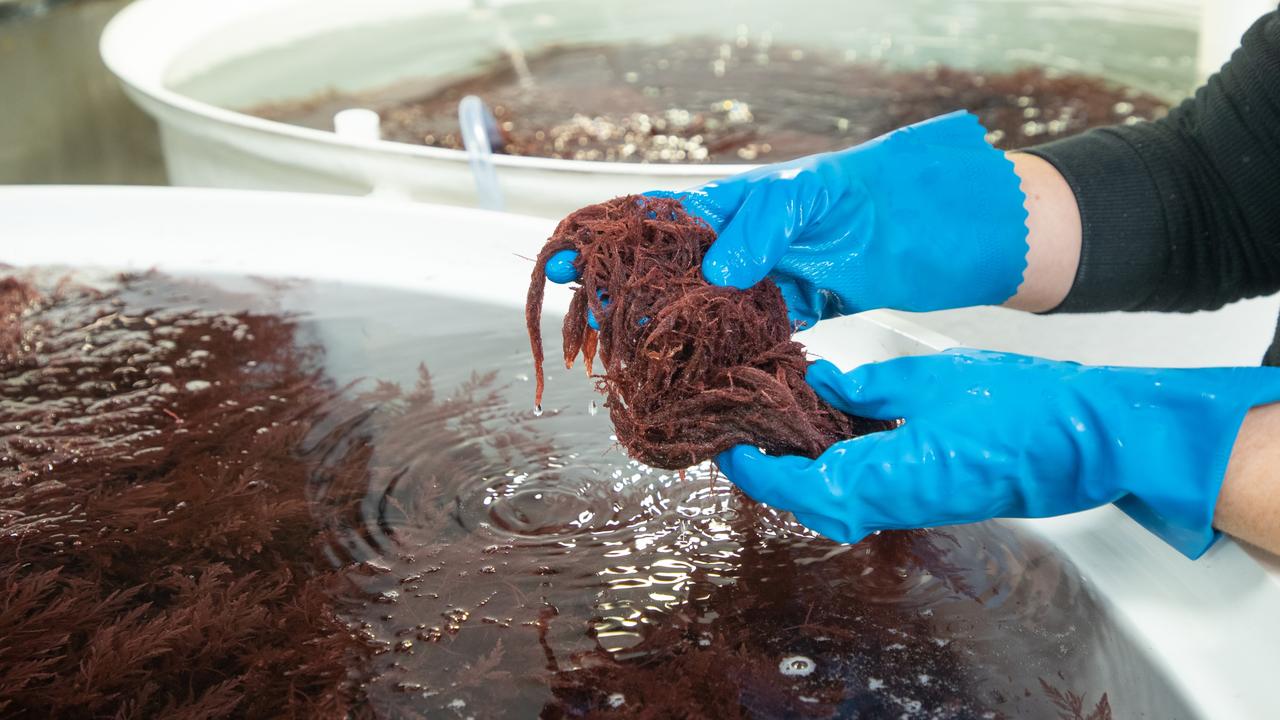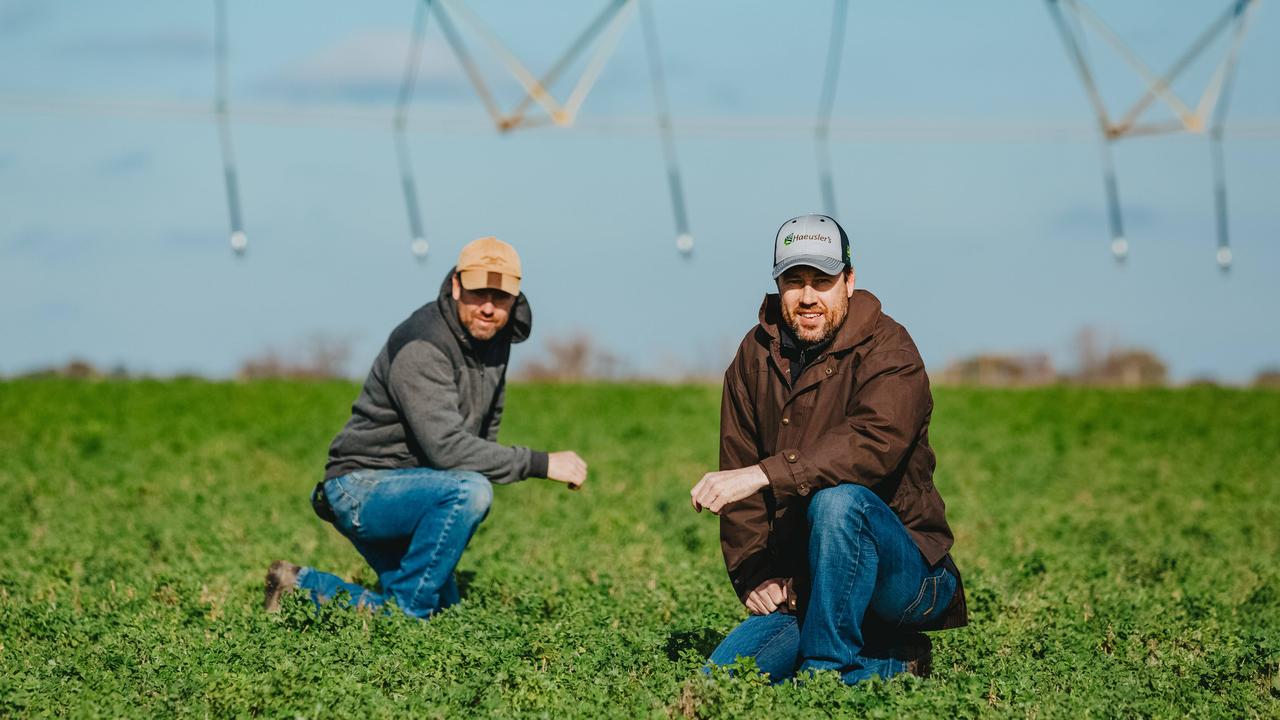Respected Angus breeder banks on dung beetles to improve manure management
Every livestock producer in the nation stands to benefit from the army of manure managers working beneath the soil.

LUCINDA Corrigan laughs, admitting this interview’s theme may be a first for her.
Dung is the hot topic.
“I probably don’t talk to people about dung beetles a lot,” says the experienced livestock producer, with a chuckle, after explaining how to check cow pats for beetle activity.
“You really need to get a shovel out and dig into the soil and see where the little dung-beetle tunnels are going. You can see that they are burrowing and taking the dung into the soil, which is increasing the organic matter and the nutrients.”
Lucinda doesn’t count herself a beetle expert, but she has a keen interest in the miniature livestock because of the benefits they offer her land and animals.
With husband, Bryan, and their adult children, Ruth, 31, and Anthony, 28, Lucinda runs a renowned cattle breeding operation on Rennylea, a grazing property at Bowna that has been farmed by Bryan’s family for generations.

The Corrigans rear about 3500 cows across Rennylea and another property at Culcairn, in the NSW Riverina north of Albury, totalling more than 4000 hectares.
For generations, the family has worked to improve their grazing system to maximise health and productivity of soil, pastures, livestock and waterways.
“For us, the family has been here 150 years. So it is about what are we going to do for the next 30 years that is going to make a difference. Or the next 100,” Lucinda says.
“We are a net emitter of carbon so I think for us – especially with our children – we are all keen to improve the system to make it more efficient and less polluting.”
Sowing improved perennial pastures, using short-term annuals to combat weeds and adding legumes, which aid nitrogen fixation and offer high-protein fodder for cattle, are part of their management plan.
“We think dung beetles are another part of that,” Lucinda says.
“The dung beetle is all about how do we do this better – how do we get nutrients moving into soil more efficiently … and not running off in waterways.”
Lucinda first heard about the benefits of the insects about two decades ago, through the work of entomologist John Feehan.

The little black beetles are credited with reducing CO2 levels, improving soil fertility and even threatening the traditional Aussie salute by removing the cow poo where prolific bush flies breed.
In the ’90s, Lucinda bought her first batch of Bubas bison beetles and released them on Rennylea, in the hope they would become natural tilling machines, aerating the soil while burying manure as deep as 50cm beneath the surface.
“I went out behind the wool shed and stuck them under cow pats,” Lucinda remembers. “Ideally, they would be so much better than getting a tractor and driving an implement through the soil to aerate it.”
After setting them free under the paddock pies, Lucinda never saw the original beetles again. But, she has seen evidence of their busy work in late autumn and winter. On her property, activity is greatest during the wetter months. “What we would like to do is see this activity happen throughout the year,” she says.
Lucinda is one of many producers across NSW, Victoria, South Australia and Tasmania taking part in a new study to map dung beetle species, expand their numbers in Australia and analyse their performance.
The Dung Beetle Ecosystem Engineers project is a collaboration between Meat and Livestock Australia, CSIRO, Charles Sturt University and eight other organisations. It is funded by the Federal Department of Agriculture.

DBEE field technical co-ordinator Dr Russ Barrow says there is a notable lack of beetle activity across southern states in drier months. So, project researchers are importing three new species, from North Africa and Europe, that they hope will thrive in the dry Australian climate and fill the seasonal spring lull in beetle activity.
“They help provide fertiliser, stop pollution, reduce fly and worm burdens and increase water-holding capacity of the soil,” Dr Barrow says. “When you have beetles active, you have all these holes going down into earth.
“When it rains … you have a paddock like a sponge where the rain soaks in.”
He explains there are several ways to make a property more hospitable for dung beetles.
First, choose species that are suitable for the climate. The DBEE project hopes to paint a clearer picture about geographic distribution of species, to help farmers and researchers release beetles in areas where they are likely to establish well.
Some antiparasitic drenches can kill dung beetles, so producers should manage drenched cattle methodically, Russ says.
“You can’t tell a producer not to use a drench, because they are using a drench to make their animals healthy,” he says. “But producers who are aware will drench their animals and put them into a certain paddock, that drench will work its way through an animal and beetles will be impacted in that paddock only.”
For Lucinda, arming herself with the latest information is part of her goal to continually improve her operation.
“Probably most people are like me,” she says. “We monitor what we’ve got, work out what we haven’t got, and find out how we can do this better.
“This is all a moving feast, because of climate change. What we did years ago isn’t necessarily the best thing now. We are always searching for ways to get the system to work better.”

BUSY BEETLES
There are 23 species of non-native dung beetle established across Australia, introduced by CSIRO from the late 1960s through the ‘80s.
Native dung beetle species number in the hundreds, but they evolved with marsupials and are not adapted to eat or breed in cow dung.
The original CSIRO importation program was led by Hungarian immigrant Dr George Bornemissza, who arrived here in the ’50s and immediately noticed Australian farmland was covered in cow pats, unlike the fields of Europe.
The Dung Beetles Ecosystem Engineers program is picking up where Dr Bornemissza’s work left off, mapping active beetles and introducing new species.
Program field technical co-ordinator Dr Russ Barrow says dung beetles can be classified into three types: dung dwellers, rollers or buriers.
The DBEE project will focus on buriers, which feed on the liquid component of cow dung, then lay eggs in the solids, make a brood ball and bury it about 20-50cm beneath the soil’s surface.
“One of the problems that we are historically faced with is that of the releases CSIRO did over their 20 years, it was unfortunate that none of the spring-active beetles established,” Russ says.
“So we went back and selected a spring-active dung beetle from North Africa based on the understanding that spring in North Africa will be similar to spring in Australia.”
Thousands of the Onthophagus vacca beetles, from Morocco, are hatching in a special breeding facility at Charles Sturt University. The CSU team is working with CSIRO scientists to fine tune rearing conditions and maximise survival and reproduction.
The new generation of O. vacca beetles will be introduced to testing sites in South Australia. If the introduction is successful in on-farm nurseries, future beetles will also be released across Western Australia, Victoria and NSW.
dungbeetles.com.au


